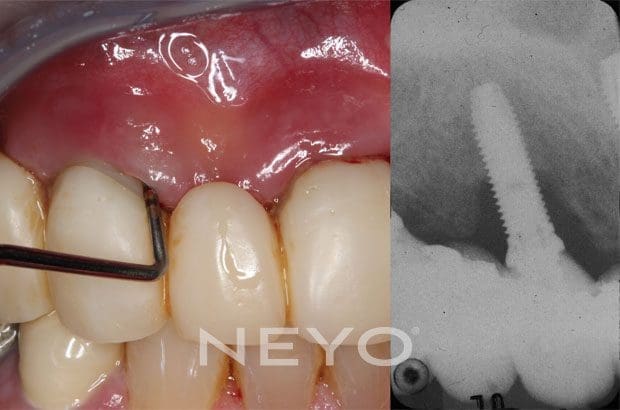Dental implants have a success rate of 95 percent and provide reliable replacement for one or more missing teeth. However, just like your natural teeth, implants can develop an infection in the gum around the implant called Peri-Implantitis. This is the Gum Disease of Implants.
Poor oral hygiene can lead to dental plaque accumulating around the dental implant. The bacteria in dental plaque produce toxins that cause Peri-Implant Mucositis. If the plaque biofilm is not removed it can spread below the gum line breaking down the gum and bone that support your dental implant, forming pockets. Over time these pockets can deepen leading to your implant needing to be removed.
What are the symptoms for Peri-Implantitis?
- Often there are no symptoms
- Red, swollen, painful or bleeding gums
- Receding gums or gums pulling away from the implant
- Bad breath or a bad taste in the mouth
What causes Peri-Implantitis?
- Poor brushing and flossing
- Tobacco Smoking
- A history of Periodontitis
- Stress
- Diabetes
How can you treat Peri-Implantitis?
Firstly it is essential to establish an excellent level of oral hygiene by correctly brushing and flossing your teeth daily. Giving up smoking can also greatly improve the health of your gums. Some of the treatments for Peri-Implantitis include:
- Professional Mechanical Plaque Removal (PMPR). This is a deep cleaning treatment that carefully removes plaque biofilm and calculus from your implant both above and below the gum line. Once the implant is clean, the gum pocket can begin to heal.
- Conservative Peri-Implant Surgery. This is when the gum is gently lifted away from the implant so the plaque biofilm and calculus can be cleaned under direct vision, especially if the gum pockets are very deep. The gum pocket is directly reduced and tightened around the implant.
- Bone Regeneration. Peri-Implantitis destroys the bone supporting your implant. It may be possible to use a regenerative procedure to reverse some of the damage. A graft bone substitute can be used to encourage your body to regenerate the lost bone and tissue.
- Implant Extraction. In the worst cases of Peri-Implantitis when bone loss is so severe that the implant cannot be saved, removal may be recommended.
Please do not ignore painful or bleeding gums because the effects of Peri-Implantitis cannot be completely reversed. The sooner Peri-Implantitis is diagnosed and treated the more chance you have of preventing loss of your implant. If you recognise any of the symptoms above, make an appointment with a dental professional for a consultation.







